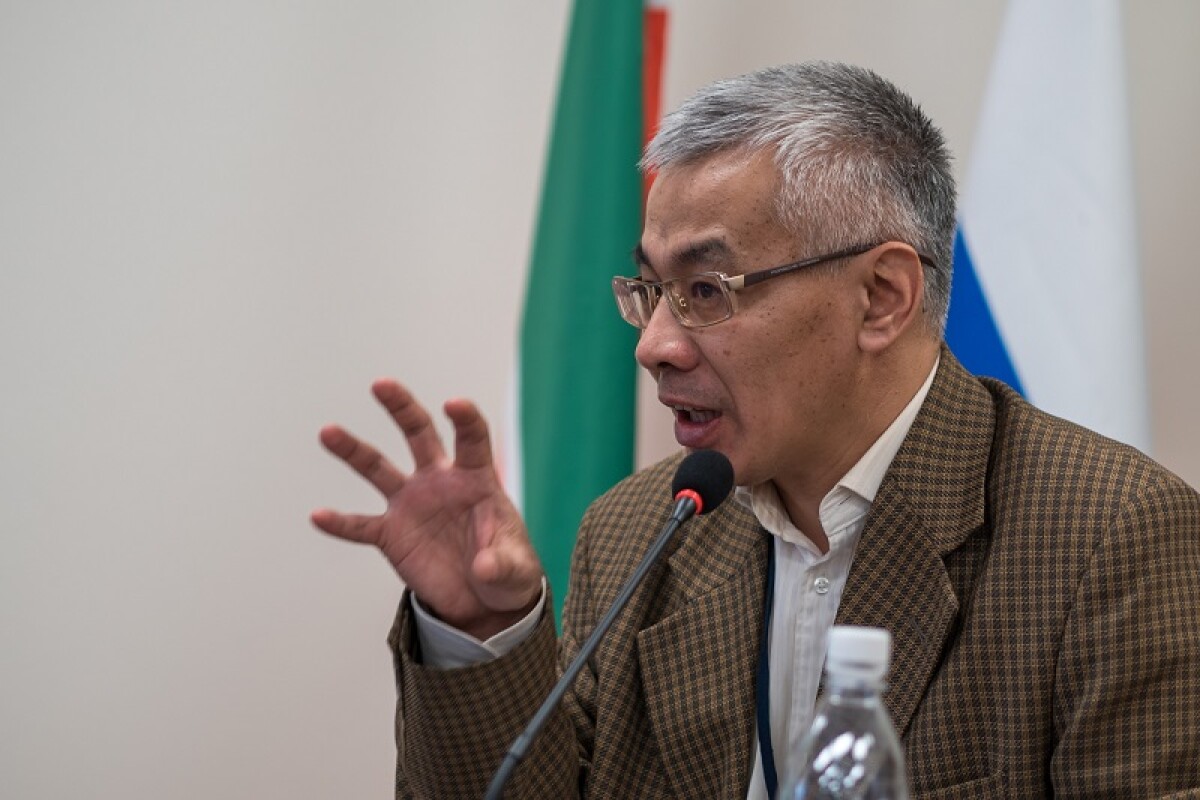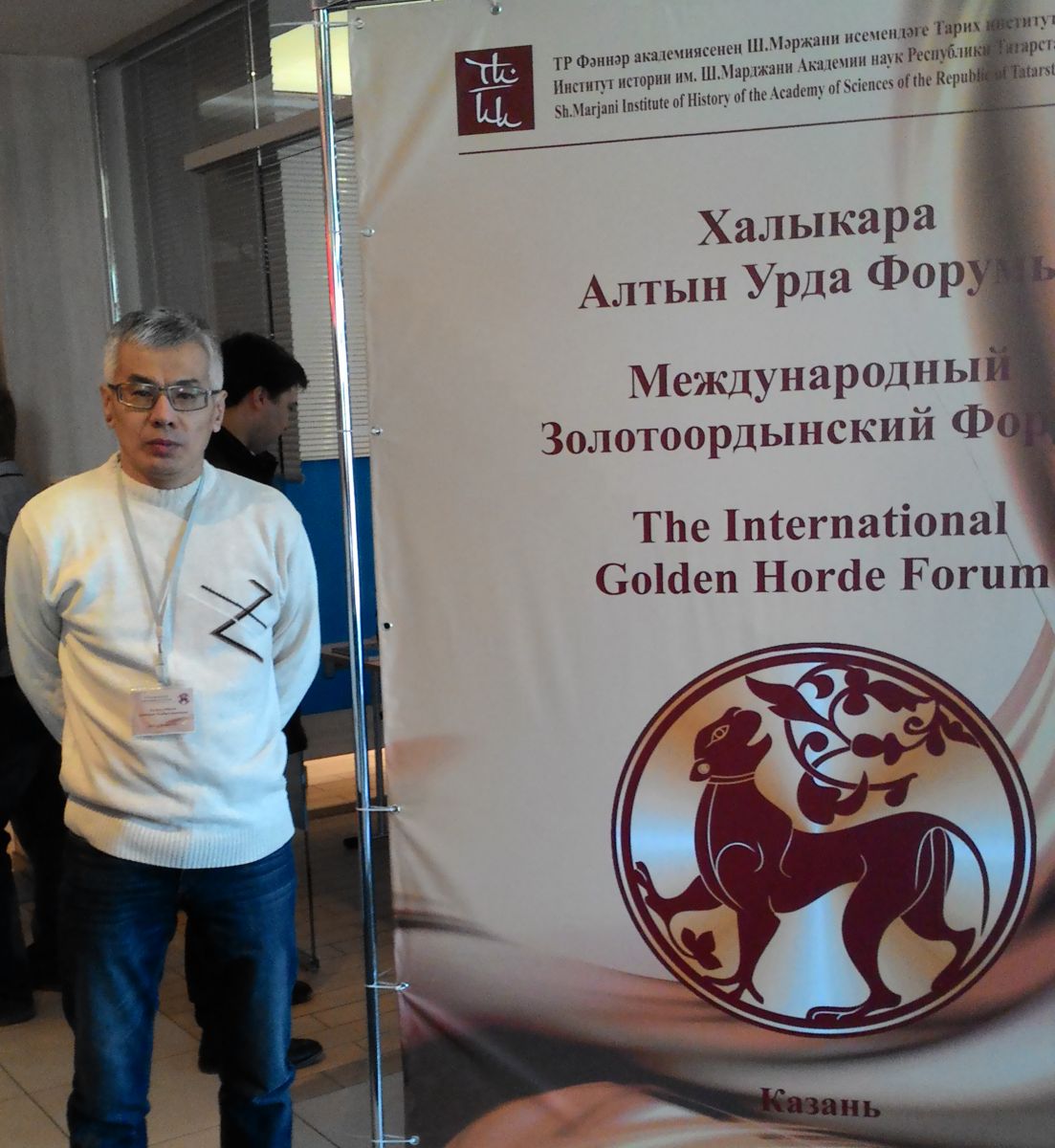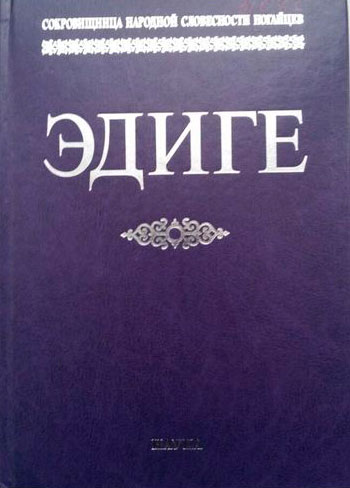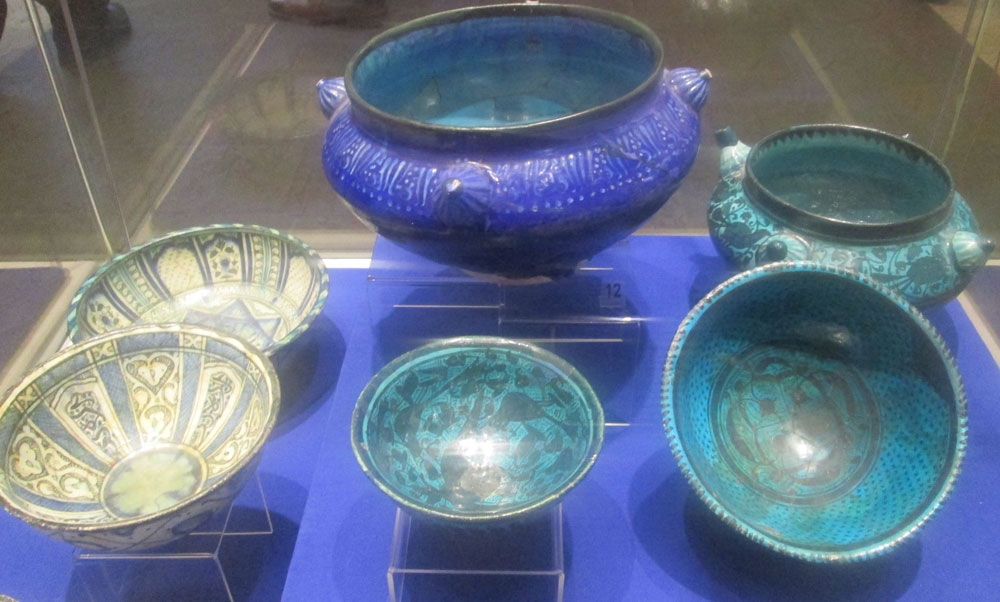
"Akorda, covered with gold" was said in ancient times about the Golden Horde. Kushkumbaev Aibolat Kairslyamovich, doctor of historical sciences, professor of ENU named after L.N. Gumilyov shared his impressions of the past forum, achievements and problems of historical science.
- Aibolat Kairslyamovich, you recently returned from the International Golden Horde Forum in Kazan, where you were not the first time. Tell us about the organization of the forum.
- The International Golden Horde Forum, the fifth this year on the account, is held periodically every two years. The first forum was held in 2009. The forum is organized by the Center for Research of the Golden Horde and the Tatar Khanates (Head: Ilnur Mirgaleev) at the Institute of History named after Sh. Mardzhani Academy of Sciences of the Republic of Tatarstan (Director: Rafael Hakimov). Now in the era of the global Internet and social networks, any work of scientists almost instantly spreads among interested readers. And the meetings at such specialized scientific forums are important not only from the point of view of the exchange of views, but also to establish creative and personal contacts for scientists from other countries and regions. For example, more than 100 scientists from 18 countries (USA, France, Hungary, Serbia, Croatia, Hungary, Kazakhstan, Mongolia, etc.) took part in the work of the Golden Horde Forum. This suggests that the scientific authority and weight of the forum is growing every year.
- What questions of the conference were you interested in?
- At the last forum, the central problem, of course, was the history of the Golden Horde and the late Golden Horde state formations. Several scientific events were held within the framework of the forum. I participated in the conference and delivered a report on the term "Horde" in the nomadic empires of Central Asia of the antiquity and early Middle Ages.
.jpg)
- By what scientists with a world name in the history of science the forum was presented?
- As I have already said, the forum unites scientists from many countries who are leaders in studying the history of the Mongolian Empire, the Golden Horde, the Tatar khanates, and the history of Eurasia in the Middle Ages in general. The names of such world-renowned scientists as Mark Kramarovsky (the State Hermitage, St. Petersburg), Michelle Balar (France, Paris), Yulai Shamiloglu (USA, now working in Astana at Nazarbayev University), Vadim Trepavlov (Moscow, Institute of Russian History), Damir Iskhakov (Kazan, Institute of History), Istvan Zimoni (Szeged, Hungary), Ilya Zaitsev (Moscow, INION) and many other well-known specialists who ask scientific "tone and background" in their field of research and very high scientific criteria.
Upon completion of the scientific forum, Mr. Yulai Shamiloglu, by the way, who came to the forum for the first time, highly appreciated the scientific level of the conference and said that he was pleasantly surprised to participate in the work of the forum along with Professor Michelle Balar from France, whose fame and authority in Western scientific world is very large.

- What problems, in your opinion, have Kazakhstan's historical science today?
- Along with the achievements and successes of our historical science, which we certainly have, in recent decades serious problems have appeared.
Our domestic science is still in crisis. This is due, first of all, to the training of scientific and pedagogical personnel, which is haphazard and completely non-focused.
So, on the problems of studying the history of the ancient and medieval period of our country, we have only a few specialists left that gradually leave science for various reasons (natural loss, lack of financing, difficult financial situation, migration, etc.).

The consequence of such a lamentable position of science was, for example, the lack of competent research specialists who would deal with the problems of the history and culture of the ancient Saks, Sarmatians, Huns (Sünnu). Today in our study of the ancient past there is an absolutely unexplored large chronological gap, beginning from the end of the 1st millennium BC - the first centuries AD and until the middle of the 1st millennium AD, precisely because of the lack of specialists (archaeologists, historians and linguists).
Even questions of the history of the ancient Turkic era of the second half of the 1st millennium AD (key for the Patriotic History and for the concept of "Mangilik El"!) are actually being developed by inertia (due to the existing earlier reserve) by 2-3 researchers, which is clearly not enough.
For other historical periods, the situation is also not better.
Thus, for the medieval history of Kazakhstan and the Kazakhs, in particular as a titular ethnos, the era of the Chingizid Empire and the history of the Golden Horde (Ulus Juchi) had a special and really high priority, on the cultural and historical basis of which actually appeared along with other Late Golden Horde states, their historical successor - "Kazakh Eli" Kazakh Khanate of the XV-XVIII centuries.
- Are our studies consistent with the main world scientific trends?
- There is a clear scientific gap with foreign research centers (Russia, Tatarstan and Mongolia) in studying this complex and simultaneously bright and interesting and fateful period of Eurasian history, one of the leading historical roles played directly by the ancestors of modern Kazakhs. According to Zh. Sabitov,
the history of studying the history of the Altyn Horde in the last twenty years is totally protected by 3 dissertations.
- What scientific achievements did you reflect in your report?
- My report was devoted specifically to the concept of the "Horde" and its significance in the nomadic empires of Central Asia during the period of antiquity and the Middle Ages. The earliest information in the sources about hordes is found in the era of the Huns in the form of "outo", in the meaning of an armed camp, the rate. The custom of erecting the golden ("royal") tents goes back to the ancient tradition of the Turkic rulers. In the genealogical legends of the Turkic peoples about Oguz-khan there are references to his golden tent. At the same time,
"altun" - gold is a distinctive feature of the supreme power of the rulers of the Turks.
About golden tents-stakes of nomadic rulers inform Chinese sources. The political custom of building large tents-yurts, of course, goes back to the time of the ancient nomadic empires of Central Asia. During the reign of El-etmish Bilge kagan (747-759), known by Chinese sources as Moyanzho, the capital of the Uighur Kaganate, Ordu-Balyk was built, which was a huge city with a population of up to one hundred thousand people. Actually, the term "Ordu-balyk", translated literally as "capital city", as well as other derivative variants, indicates that "ordu" was a symbol of the center of the Turkic kaganate-eli. It was there that the stationary political center - the tent-residence of the Turkic Khans was located. Thus, the concept of "horde" included, first of all, the rate-residence of the ruler - the palace of the first person of the state, the houses of the nobility and help staff.

As the political power of the nomad empire grew, the capital center began to take on a sedentary character, where large palace constructions were built.
In this context, the name "Altyn Orda" during the reign of the Juchid Empire is an organic political continuation of the ancient imperial tradition of the nomadic states of Central Asia.
The nomadic population of the Golden Horde did not call its state "Altyn Orda". If we take the official documents of the Golden Horde's Office late XIV century, we see that it was called "Uly Ulus" (literally "Great Ulus", "Great State", "The Great Empire").
And this is not surprising. In the epic "Edighe" there is such a phrase: "Altynnan sokkан Аkорда" – literally "Akorda, inscribed (covered) with gold", which denotes the horde-rate - the central residence of Khans of Juchi Ulus.
For the steppe Turkic population, "Altyn Orda", as well as "Ak Orda", is the center of power of the Juchid rulers, and the state itself is Ulus or Uly Ulus. This is the difference between our steppe perceptions of Uly Ulus (Golden Horde).
The term "Golden Horde" appears later in the Russian-speaking environment and is distributed in the scientific literature and journalistic genre and is finally fixed in the twentieth century.
- How much of a theme of the Golden Horde is relevant for Tatar historians?

- The history and heritage of the Golden Horde has been especially acute in recent years thanks to the efforts of our colleagues from Tatarstan. For the scientific historiography of Tatarstan, this topic, in my opinion, was a priority even in the Soviet era, when there was an open and later unspoken taboo on the study of the Golden Horde history. Even in those years famous Turkologist, academician Mirkasym Usmanov, who in fact spent his entire life studying the Golden Horde heritage, published his works. Discussions on this topic continue, and it is unlikely that a compromise will be reached due to the political and ideological accents that have developed in the post-Soviet world. But there is progress in this direction, since prominent scientists, including Russian ones, specializing in this period, refuse such rhetoric towards the Golden Horde and consider the history of this state to be a self-sufficient historical phenomenon that requires objective academic study.
As for the historical and cultural heritage of the Golden Horde, it is common to many states and peoples. First of all, it concerns modern Turkic peoples such as Nogai, Tatars (Volga, Crimea, Siberia, etc.), Bashkirs, Kazakhs, Uzbeks, Karakalpaks, Karachais, Balkars, Kumyks, Kyrgyz, etc. The beginning of the formation of these peoples is directly connected with History of Altyn Horde.
All peoples have a common epos "Edighe zhyry" (Idegei, Yedigei). I counted about 40 variations of this epic work. Only in Kazakhstan was published about 10 variations of the epos "Edighe", within the framework of the state program "Madeni mura".

The epic itself appeared in the era of the late Golden Horde in the midst of the medieval nogai, the western neighbors of the Kazakhs, and spread over a vast territory from the Crimea to the Siberian Altai region, that is, on the lands of Juchied Ulus.
The epic was repeatedly published, translated into other languages and can be regarded as a kind of historical source on the language and culture of the population of the late Golden Horde.
Recently, thanks to the efforts of the Nogai scholar-philologist Nasipkhan-khanum Suyunova, the poem "Edighe" was published, where the main versions of this priceless monument of the Turkic literature and culture were collected.
Heroes of the epic speak the Nogai language - the main language of the nomadic population of the Golden Horde, which in turn is close and native to both Kazakhs and Karakalpaks, and for the Tatars, Bashkirs.
- So, who of the modern nations owns the Golden Horde heritage?
- I want to answer with the words of one of the prominent domestic experts of medieval history, the scholar-Arabist Ashirbek Muminov: "History belongs to those who study it."
- What is the significance of the conference for the history of Kazakhstan, Tatarstan and the world in general?
- The value of the Golden Horde scientific forums, which are held on a regular basis, is enormous.

First, the academic institutions of Tatarstan became in fact the main scientific center for the study of the Golden Horde history, which skillfully and verified mobilizes and coordinates the scientific activity of historians, sources of research, numismatists, historiographers and other specialists in this field. If earlier such studies did not have a systemic form, being, as a matter of fact, the initiative of individual specialists, today the Center headed by I. Mirgaleev unites all interested researchers in a research team that purposefully conducts its scientific research.
Secondly, in this organizational format, the researchers themselves need to work on their own topics on an ongoing basis; they have the opportunity to prepare materials, write articles and publish their research and developments in scientific periodicals.
Third, I must say that such creative integration of scientists from different countries and regions was embodied in concrete scientific results. So, the "History of the Tatars from Ancient Times" was recently prepared in 7 volumes. In 2016, the monograph "The Golden Horde in World History" was released.
I am glad that the Tatar colleagues and scientists have undertaken a large-scale work and responsibility for studying the history and culture of the Golden Horde and I wish them great creative success on this path!
By Arman SULEIMENOV
Translated by Raushan MAKHMETZHANOVA
Use of materials for publication, commercial use, or distribution requires written or oral permission from the Board of Editors or the author. Hyperlink to National Digital History portal is necessary. All rights reserved by the Law RK “On author’s rights and related rights”. To request authorization email to kaz.ehistory@gmail.com or call to (7172) 79 82 06 (ext.111).

